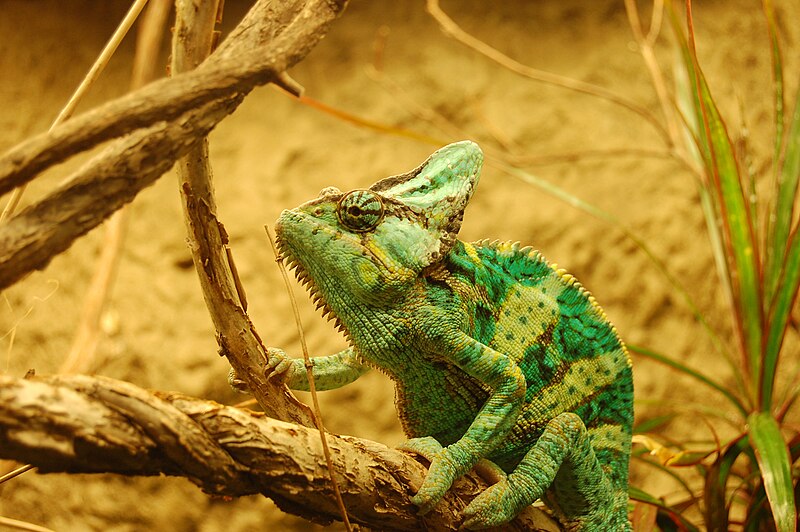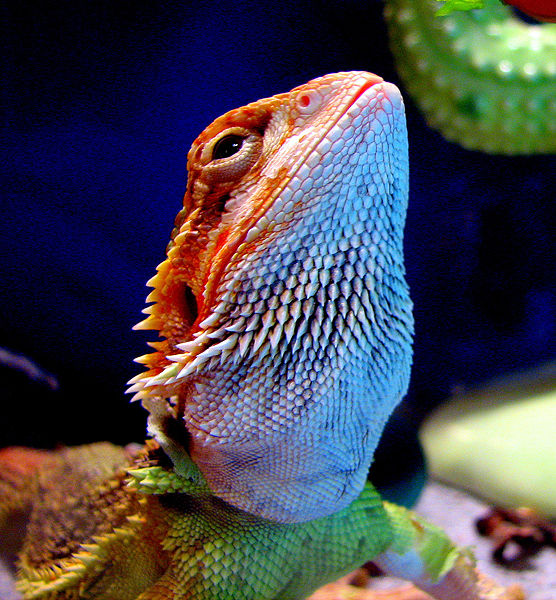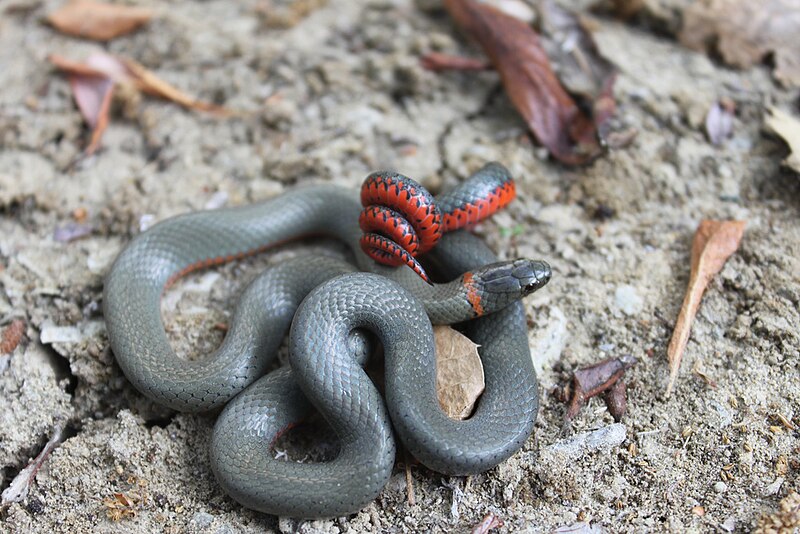 Like most lizard enthusiasts, I was mesmerized by Flying Geckos at first glance. Early on, both Malayan and Kuhl’s Flying Geckos (Ptychozoon lionotum and P. Kuhli) were rare in the trade, but by the early 1980’s I found them readily available and integrated both into a Southeast Asian exhibit I maintained at the Bronx Zoo. I had some breeding success, but today’s stock remains largely wild caught. Because they are both inexpensive and bizarre, Flying Geckos are often purchased by relatively inexperienced keepers. But while they can be hardy, prolific breeders, Flying Gecko ownership requires some forethought; hopefully the following information will prepare you.
Like most lizard enthusiasts, I was mesmerized by Flying Geckos at first glance. Early on, both Malayan and Kuhl’s Flying Geckos (Ptychozoon lionotum and P. Kuhli) were rare in the trade, but by the early 1980’s I found them readily available and integrated both into a Southeast Asian exhibit I maintained at the Bronx Zoo. I had some breeding success, but today’s stock remains largely wild caught. Because they are both inexpensive and bizarre, Flying Geckos are often purchased by relatively inexperienced keepers. But while they can be hardy, prolific breeders, Flying Gecko ownership requires some forethought; hopefully the following information will prepare you.
Description
The 7 Flying Geckos in the genus Ptychozoon are among the most unique of the world’s 900+ gecko species. Both the Malayan and Kuhl’s reach 6-8 inches in length and are distinguished by skin folds (along the head, flanks and toes) that enable them to glide through the air. A heavily-serrated tail assists in breaking up their outline. In overall appearance, I can best describe them as “amazingly bark-like”.
Their color varies through a wide range of tans, grays and browns, and the skin is marked with an array of blotches and stripes. Malayan and Kuhl’s Flying Geckos are difficult to differentiate by eye; the Kuhl’s tongue is often tipped in black, but I cannot say whether this always holds true.
Range and Habitat
The Malayan Flying Gecko inhabits Myanmar, Thailand, India, Malaysia and neighboring islands. The range of Kuhl’s Flying Gecko extends from southern Thailand through Java, Sumatra, Malaysia, Borneo and Sulawesi, and overlaps that of its cousin extensively. Whether or not they hybridize, or utilize different niches within the same range, has not been researched. Other geckos are, however, known to partition habitats in species-rich areas; this article describes an interesting study carried out on Borneo.
Flying Geckos favor rainforests and other humid, densely-foliated habitats. However, they have colonized farms and human habitations, and it is from such areas that most are collected.
Captive Care
Malayan and Kuhl’s Flying Geckos may be kept and bred under similar conditions. As most in the trade are wild-caught, stress, mites and internal parasites are a major concern. As concerns medication, I’ve found them to be quite delicate; be sure that you use a well-experienced veterinarian to examine all new arrivals.
The Terrarium
Although wild-caught females may initially produce eggs, sustained captive breeding is only possible if the appropriate environment and diet is provided. A spacious terrarium – a 20-30 gallon tank for a trio – is essential. “Tall” style aquariums are ideal. Flying Geckos spend most of their time on tree trunks, where their camouflage may be used to great advantage, and will be stressed if forced to use other resting sites. Corkbark or native tree bark must be available, and the cage should be densely-planted (live plants are best). Flying Geckos will not thrive in bare enclosures.
Temperature, Humidity and Light
Humidity should be maintained at 75-80% for most of the year (see “Breeding”), with a temperature gradient of 75-85 F. Nighttime temperatures can dip to 70 F. A mix of sphagnum moss and a forest bedding, serves well as a substrate.
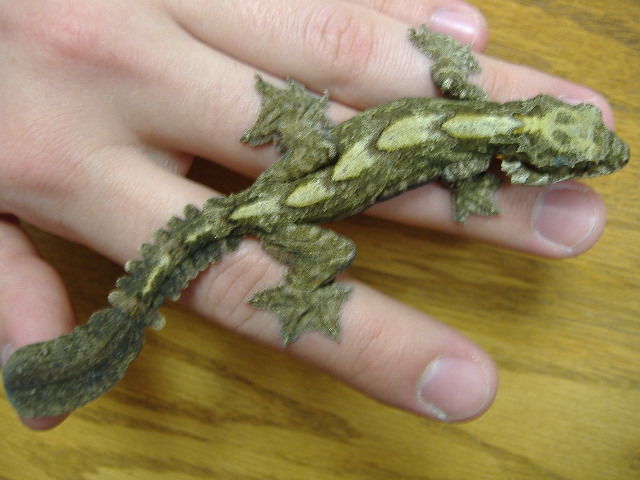 Although Flying Geckos are nocturnal, wild individuals often spend their days in open situations, on tree trunks, and may therefore be exposed to UVB. Low doses of UVB, as provided by a ZooMed 2.0 bulb, are likely beneficial. Overly-bright environments should be avoided, so choose plants that do well in low light (pothos, snake and cast iron plants). Incandescent heat bulbs can be used to maintain temperatures; red/black night bulbs (which will assist in nighttime observations) or ceramic heater-emitters can be used after dark.
Although Flying Geckos are nocturnal, wild individuals often spend their days in open situations, on tree trunks, and may therefore be exposed to UVB. Low doses of UVB, as provided by a ZooMed 2.0 bulb, are likely beneficial. Overly-bright environments should be avoided, so choose plants that do well in low light (pothos, snake and cast iron plants). Incandescent heat bulbs can be used to maintain temperatures; red/black night bulbs (which will assist in nighttime observations) or ceramic heater-emitters can be used after dark.
Diet
Flying Geckos specialize in hunting flying and arboreal insects, and will not fare well on crickets alone. Housefly cultures, silkworms, roaches, moths and other insects are essential to their well-being. The comments in this article on Red-Eyed Treefrog Diets are largely applicable; please write in if you have any questions on this critical aspect of husbandry.
Breeding
Mature males may be distinguished from females by their pre-anal pores and the two scaly skin-folds that outline the cloaca.
Males fight savagely, and cannot be housed together. A single male may be kept with multiple females. Gecko skin is delicate, and bite injuries may occur during courtship and copulation; check also for dominance battles among females.
Stimulating Reproduction
In the wild, breeding likely extends through much or all of the rainy season (March to May through October, depending upon locale). Increasing the frequency and duration of daily misting in the spring will encourage captives to come into breeding condition. Novel food items and increased dietary variety should also be introduced at this time. Some have reported that removing and re-introducing a male will stimulate interest.
Lowering temperature and humidity slightly during the fall and winter may also be useful, but is not critical (please write in for details).
The Eggs
Gravid female swell noticeably, and their 2 eggs will be visible through the skin in time. A well-fed female may produce 3, or possibly more, clutches of 2 eggs each. I’ve recorded inter-clutch intervals of 2-3 weeks, but this time period is likely affected by many factors.
Eggs are affixed to bark, glass or stout plant leaves. Be sure to provide ample nesting sites that can be removed for incubation, as the eggs are often broken during attempts to peel them from the deposition surface. Corkbark slabs are ideal, as they can be cut to fit incubators if need be.
Incubation
Suitably-sized plastic terrariums, with the ventilation ports sealed, make ideal incubators. Eggs under my care generally hatched in 60-80 days at 82-85 F, but temperatures of 70-90 F, and incubation times of 30-90 days, have been reported.
Eggs deposited on glass are difficult to remove; I’ve incubated House and Day Gecko eggs on glass by affixing a cup containing damp sphagnum moss over the eggs, but this is not an ideal situation.
The Young
Hatchlings average a bit over 2 inches in length and may be reared on fruit and other flies, small crickets and roaches, silkworms, moths, termites and similar insects (please see diet comments above).
Further Reading
Gecko Gliding Explained: excellent, comprehensive articles with photo of geckos “in flight”
Incubating Reptile Eggs
Kuhl’s Flying Gecko: great photos
Ptychozoon kuhli image referenced from wikipedia and originally posted by Manuel Werner
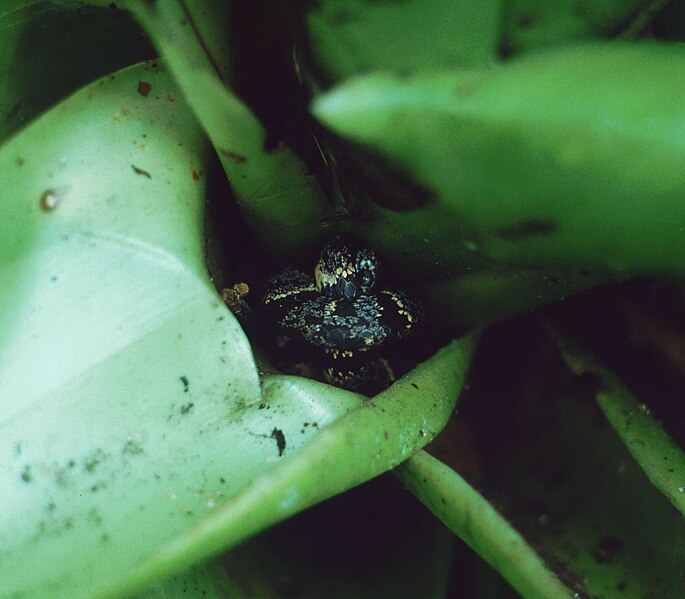 An amazing array of newly-discovered reptiles and amphibians grabbed our attention this past year. The unexpected discoveries of an undescribed Leopard Frog in New York City and a Rainbow Skink in an Australian backyard reminded us that wonderful surprises surround us, if only we take the time to look and learn. Frogs that dye human skin yellow, snakes that specialize in eating only eggs or snails, iridescent skinks sporting tails twice their body length…the list is simply astounding. Today I’ll highlight a few that have especially captivated me; please post your own favorites (whether covered here or not) below.
An amazing array of newly-discovered reptiles and amphibians grabbed our attention this past year. The unexpected discoveries of an undescribed Leopard Frog in New York City and a Rainbow Skink in an Australian backyard reminded us that wonderful surprises surround us, if only we take the time to look and learn. Frogs that dye human skin yellow, snakes that specialize in eating only eggs or snails, iridescent skinks sporting tails twice their body length…the list is simply astounding. Today I’ll highlight a few that have especially captivated me; please post your own favorites (whether covered here or not) below. That Reptile Blog – Reptile, Amphibian and Exotic Pet Care and Information
That Reptile Blog – Reptile, Amphibian and Exotic Pet Care and Information

